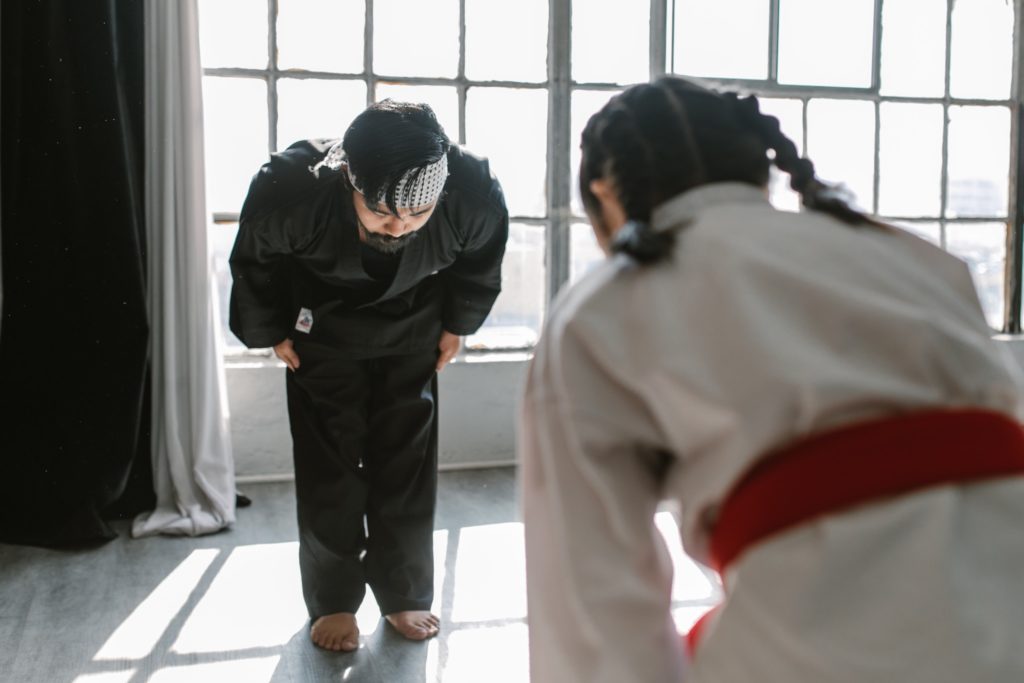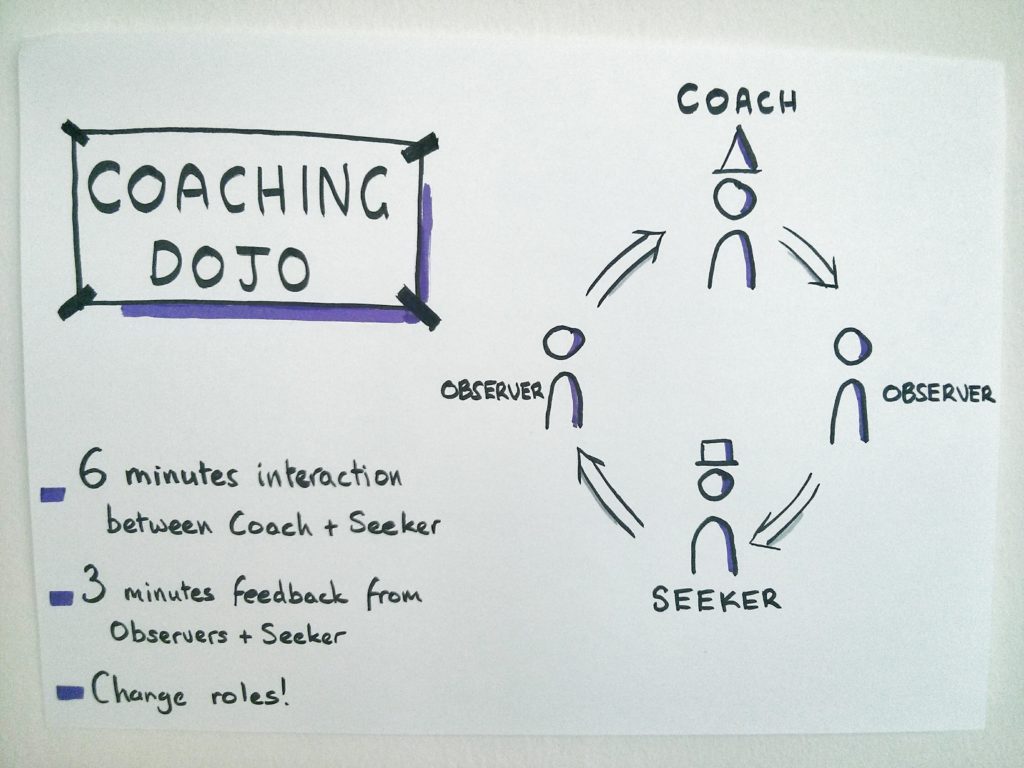Participation in coaching dojos – your guide on how and why to use them.

“Inspired by Coding Dojos, a coaching dojo is a great way to practicing active listening, empathy and a possible different way of conversing with people.
We have recently been sent a “cease and desist” letter as someone has trademarked a term which contains the words “Coaching Dojo”. Even though we certainly did not invent it, the term is being used widely in the agile community and continues to be so. It is clear from this blog post that we do not benefit in monetary terms nor do we offer this as a service to sell to any potential clients. We have never sold this as a product/service nor will we in the future. Our intention is to help people improve their listening skills and improve how they communicate with others. We do not target coaches who are looking to improve their coaching skills in coaching dojos nor anything with a different name.
Why use it?
Inspired by Coding Dojos, a coaching dojo is a great way to practicing active listening, empathy and a possible different way of conversing with people.
This method can be used by anyone to improve the aforementioned skills but I think it is particularly useful for those people in management positions or those that have to drive changes within a team or organisation. At the end of the day, we want to have people actually listening, not just nodding their heads while thinking of their next comment…
I’ve had a boss tell me that if I come to him with a problem, I should also come with a possible solution. And when I’ve been in positions of responsibility, I’ve often said something similar to members of the team. However, sometimes the solution may not be that obvious. This is where coaching helps and this is a great way of practicing.
What is needed to run one
To run a session that may be considered similar to a coding dojo but you call it a coaching dojo, you need a minimum of 3 people and some seats, preferably without tables. I start off by having all the seats in a circle an allowing the people to sit wherever they want when they come into the room. Depending on the time you have available, you may change the duration you spend on each problem, but you should use around 5-7 minutes to work through an issue and then provide 2-3 minutes of feedback at the end. In total, you should allow 10 minutes per person in each group (e.g. 30 minutes if you have 2 groups of 3 people) plus 20 minutes for the introduction and general feedback at the end of the session.
There are 3 roles to consider:
- Coach (person who guides another to a possible solution)
- Seeker (person who comes with a real-life problem)
- Observer (person who does not actively participate and provides feedback at the end of the conversation)
There may be multiple observers, and I’ve also seen it done with multiple coaches, but I think that 4 people is the optimal number (1 coach, 1 seeker, 2 observers). If you have 5 people, it could work fine with 3 observers also, but with more peole, I’d create another group.
Let the participants know that it is a session to learn some of the characteristics of coaching and practice, nothing more. Explaining that the word dojo is used to reinforce the practice element, similar to martial arts students, will also help when someone asks “Why is it called a coaching dojo?”.
The only aim should be that after the session, they will be more aware of their own coaching skills and will have practiced active listening, showing empathy and asking open questions.
Remember to state that it is a ‘safe’ place to make mistakes and learn in. This will come out in the feedback moments and no-one should worry if they don’t know what to ask, ask too many/too few questions or say that they give up and can’t help the seeker.

Description of the activity
Before starting you decide on a person for each of these 3 roles and explain that everyone will occupy all 3 roles at some point during the session. If no-one has experience of coaching, people normally do not wish to be the coach for the first round for the fear of doing something wrong. Also we’ve found that many people struggle to think of a problem or issue they would like to work through or resolve. It does not have to be a professional problem, however I suggest that it should be a real issue as the person who “invents” the problem has to remember what they have said before and may contradict themselves on occassions, resulting in frustration as the conversation goes around in circles.
Someone should also keep an eye on the time, this may be an observer, or ideally the session facilitator to tell all the groups when to give feedback and when to switch roles.
Closing the session
It’s great to provide general feedback that each group has seen. What worked well? Examples of good questions, shared learnings, did the seeker feel that the coach listened and many other things may be mentioned. Spend 5-10 minutes on gathering that feedback plus anything you may have noticed, such as body language (coach seemed uninterested or played with a pen for example). However don’t go into specific problems that an individual had naming them, keep it at a high level, allowing everyone to benefit, but not embarrassing anyone.
What next?
Active listening and conversing are skills that cannot be learnt quickly. Some people may find this comes naturally, others may need to practice, so don’t let the session becoming a one-off event. People also learn about their colleagues and actually enjoy themselves interacting in a different way.
Maybe you have already been in a “coaching dojo” (the one with the trademark or one of the many informal sessions) as a participant or you have tried to organise one. Was it useful?


